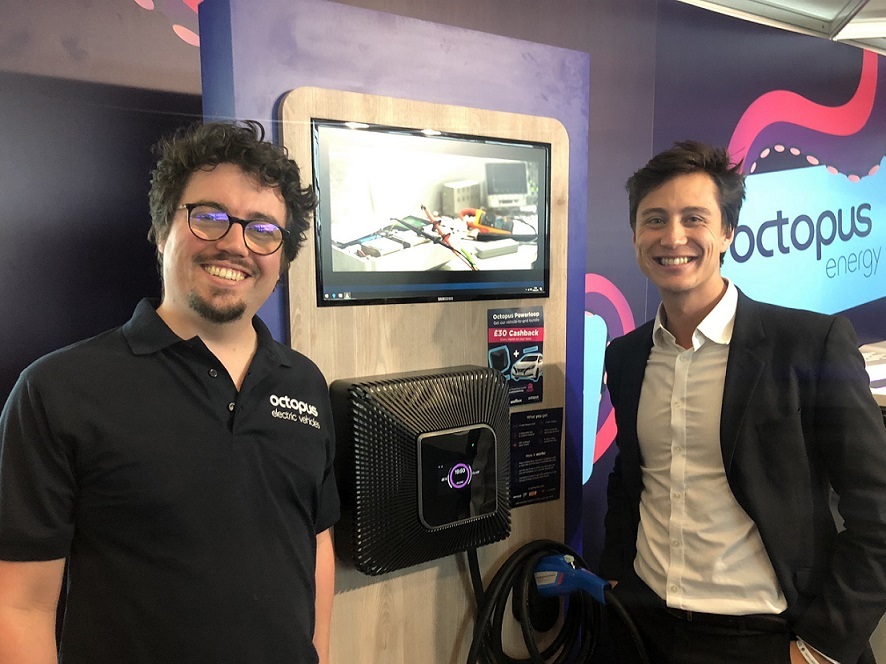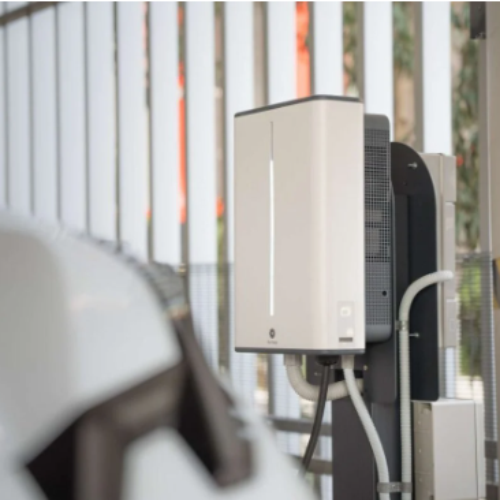Octopus Electric Vehicles is preparing a path for its vehicle-to-grid (V2G) project Powerloop to become the first to enter National Grid ESO’s Balancing Mechanism.
Developed by a consortium run by Octopus Electric Vehicles and Octopus Energy in partnership with UK Power Networks (UKPN), Energy Saving Trust, Open Energi, CPS, and Guidehouse, Powerloop has allowed over 130 electric vehicles (EVs) to become both generators and consumers of energy.
The consortium has been collaborating with National Grid ESO to develop the foundations that will allow Powerloop to enter the Balancing Mechanism in the coming months. Together they have been simulating qualifying and participating via existing routes to market, to ensure domestic EV drivers will be able to benefit from grid balancing.
Both in terms of traded value and volume the Balancing Mechanism is the largest flexibility marketplace in the UK, and works as National Grid ESO’s primary tool for managing grid issues in real time. It is currently dominated by gas-powered CCGT plants, with utility-scale battery storage also playing an increasingly large role.
Powerloop will be one of the smallest, non-traditional energy resources to ever enter the market, and the first V2G trial to do so.
The expansion of the project into the Balancing Mechanism will test whether the current system can facilitate easy participation of energy resources that are orders of magnitude smaller than current participants.
V2G and EV smart charging are set to bring significant flexibility to the grid as the system transitions to net zero – with a new 2035 target announced for the electricity network last week – said Isabelle Haigh, head of National Control for National Grid ESO.
“Our Future Energy Scenarios forecasts up to 45% of households engaging with V2G services by 2050, potentially unlocking significant additional capacity on consumers’ driveways,” she continued.
“We’re excited to be a part of a project that is blazing a trail for EVs to fulfil this potential and actively participate in the Balancing Mechanism. Powerloop is a great opportunity to understand how small-scale flexibility opportunities can help us balance the grid, and is another example of the benefits of widening participation to new players in the market.”
Powerloop was launched in 2018, and is funded by the Department for Business, Energy and Industrial Strategy (BEIS) and the Office for Zero Emission Vehicles (OZEV). Innovate UK acts as delivery partner.
It has been taking place in UKPN’s operating area, where Nissan LEAFs have been paired with Quasar V2G chargers to allow EV drivers to export power from their cars to the grid. If the drivers use this bi-directional charging technology enough times a month, they are able to make money back from it.
Throughout this, real world data has been gathered to show the potential of using V2G technology to make a car’s battery into a mobile energy asset.
“The rise of electric cars not just cleans up our roads, but also provides a huge amount of battery storage – with cars typically parked up for 90% of the time,” said Fiona Howarth, CEO of Octopus Electric Vehicles.
“Vehicle-to-grid tech allows us to store the green energy in our cars for when we need it most – and the Octopus Powerloop trial is a market-leading demonstration of doing this with real drivers using cars on their driveways to power the grid. To do this at scale, EVs will participate in the largest energy flex marketplace – the Balancing Mechanism. It is hugely exciting that we are forging that path here in the UK – setting the bar for a globally smarter energy system.”






